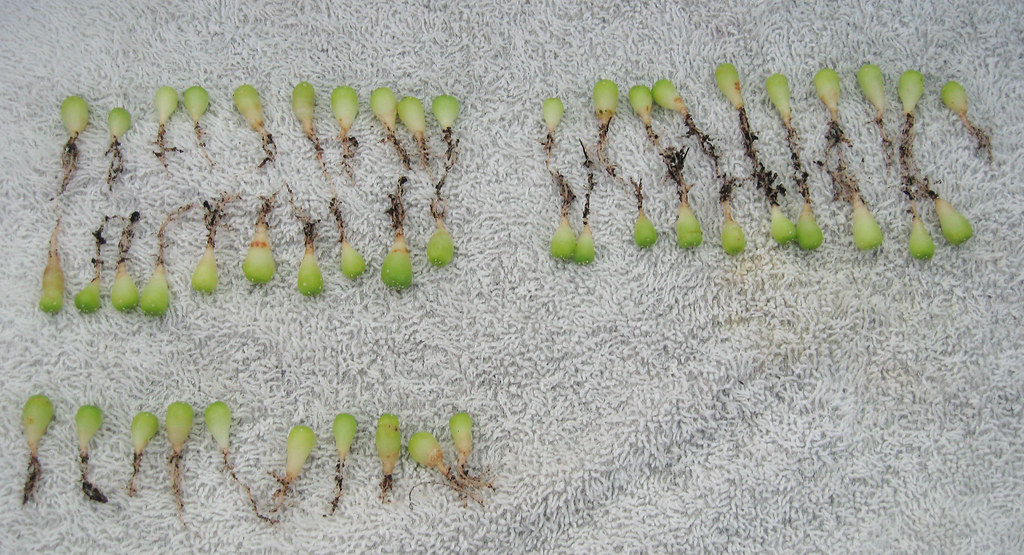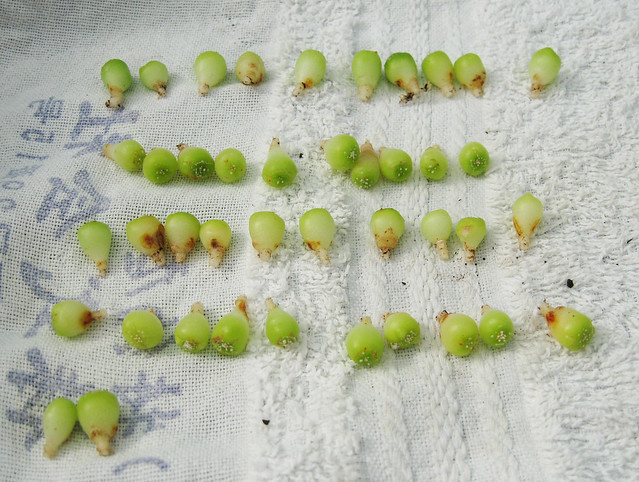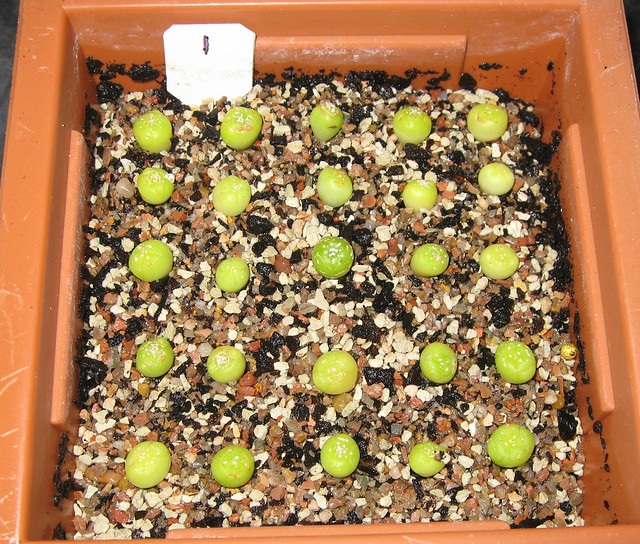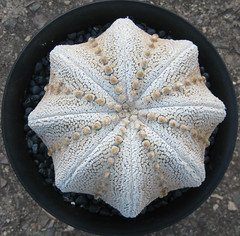Hanazono wrote: ↑Mon Feb 08, 2016 4:31 am
Potting-mix:
Organic material base plant seed rising-mix- 1
Zeolite 1~2 mm size- 1
Scoria 1~2 mm size- 1
Clay 1~2 mm size- 1
Coarse sand- 1
I do not repot seedlings for 1 year after the germination and so I mix 20% of organic material in the potting-mix.
Your success rate in seed germination is nothing less than phenomenal. So I have to ask you a couple of questions about your choices.
Pardon me for asking, but I can be a little bit slow at times so I want to make sure that I that I understand what is happening here. It looks like you're ratio here is 20% organic and 80% inorganic ... is that correct? Do you use anything in particular as an organic component? Do you think that coir would be an acceptable organic material because it does not rot as fast as peat moss and/or because it hydrates faster/easier than peat moss?
I had never heard of anyone using zeolite in their creation of a soil mixture. I had to look it up to even find out what it was. So why do you use zeolite? Do you use it for water retention, as a detoxification agent, or as a fertilization component?
Is your clay component a high fired clay? Or do you use simple cat litter?
I regularly use a red volcanic rock (3 to 4 mm in size) in my creation of a soil mixture, so I would like to ask you why do you use scoria? Do you use scoria because it is formed from basaltic magmas, instead of pumice, which is formed from rhyolitic magmas?
Explain the why of your choices, if you would please. There are some of us out here who are just fascinated by what you are doing, and wonder about the technical aspects of your choices. Your success rate is a very strong argument from making the same choices that you have. But i think that knowing the
why of your choices is important for understanding.

































